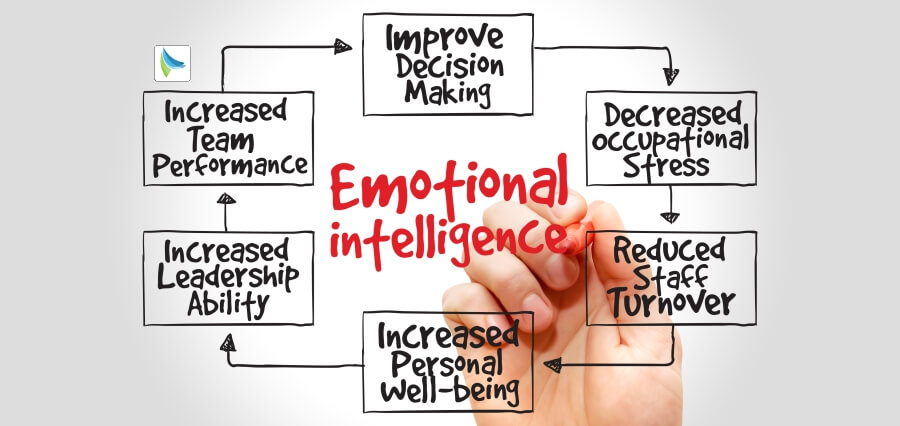In today’s complicated world, academic success is no longer sufficient in preparing students for the varied challenges of adulthood. While schools everywhere grapple with the problem of producing whole persons, emotional intelligence (EI) has emerged as a key area of concern. Putting emotional intelligence into school curricula is no longer a luxury but a necessity in developing good, compassionate, and socially responsible future citizens.
From settling interpersonal disputes to coping with stress and making effective decisions, emotional intelligence equips young students with a set of tools not only to excel in school, but in life. By integrating EI into the curriculum of schools, schools are not only advocating improved learning environments, but setting the stage for continued psychological well-being, personal growth, and global understanding.
Defining Emotional Intelligence in the Educational Context
Emotional intelligence is the talent for knowing, understanding, managing, and expressing emotions in a way that enhances functioning in all sorts of contexts, including work and personal relationships. In school, what this will mean is that students will be instructed in self-regulation of feelings, establishment of healthy relationships, constructive management of stress, and knowledge of self.
Contrary to other curriculum topics, EI is neither learned from a textbook nor assessed by an examination; rather, it is established on everyday interactions, reflective practice, and specially devised activities that promote emotional literacy and social sensitivity. Given the direct relationship between school emotional climate and student achievement, instruction in EI within the curriculum is both a pedagogy imperative and an investment in public health.
Why Emotional Intelligence Builds Resilience
Resilience—the ability to bounce back from adversity, adjust to change, and persevere in the face of challenge—is forever wedded to emotional intelligence. Children with high EI are more apt to master the coping skills they’ll use to manage disappointment, recognize their triggers, and access help when it’s necessary.
Incorporation of EI in school curriculums makes the students understand that failure is not something judged but felt. It makes them look at adversity as a development and not defeat orientation. By developing self-efficacy and emotional regulation, EI equips the learners to turn adversity into opportunity and produce a more resilient group of learners.
Curriculum Integration: A Holistic Approach
For emotional intelligence to be grown, it should be integrated into the school culture and not an afterthought. The world’s highest-performing school systems are now integrating EI into the academic curriculum, after-school curricula, and classroom discipline policies.
These can include systematic empathy instruction, communication instruction, and self-reflection instruction; journaling and mindfulness activities; restorative justice circles; peer mediation initiatives; or project-based learning that stresses collaboration and perspective-taking. Teachers also are charged with modeling emotionally intelligent behavior and providing warm, supportive classroom environments.
Also, the practices of testing are changing to measure emotional development in addition to academic achievement. Portfolios, self-assessment, and teacher observation can be used to monitor a student’s development within emotional competencies—restoring the point that success does not necessarily stem from intellect but also from integrity, compassion, and resilience.
The Educator’s Role in EI Development
Teachers are not just transmitters of information—secondarily, they are role models, mentors, and emotional stabilizers to students. Therefore, it is imperative to train teachers with emotional intelligence training. Professional development workshops based on emotional literacy, trauma-sensitive teaching, and social-emotional learning (SEL) approaches are increasingly being integrated into teacher education.
An emotionally intelligent teacher is more able to control classroom dynamics, defuse tension, and develop positive relationships with students. More deeply, they are able to provide a psychologically safe space in which students hear, are respected, and are valued—conditions required for both emotional and academic success.
EI as a Response to Mental Health Challenges
The increasing incidence of depression, anxiety, and emotional distress among young people, fueled by the cyber revolution, school stress, and worldwide uncertainty, makes it more necessary than ever to incorporate emotional intelligence into school curricula. Education about EI is a preventive measure that equips young people with the awareness of understanding and coping with their emotions prior to problems escalating into psychiatric crises.
By becoming more comfortable with emotional conversation and educating students about how to interact emotionally, schools are able to de-stigmatize mental health and encourage early intervention. Emotional intelligence then becomes the foundation for preventative efforts towards wellbeing throughout the education system.
A Global Imperative
From nation to nation and culture to culture, the demand for emotional intelligence in schooling is building strength. From the United Nations’ focus on “Education for Sustainable Development” to the OECD’s integration of social-emotional skills into international student testing, it is evident that the future of schooling is both intellectual and emotional.
Government officials, teachers, and curriculum planners now have to work together to render emotional intelligence no afterthought but a cornerstone of school reform. In city classrooms as in country towns, all children have to be able to receive an education that teaches them not only to pass tests, but to lead rich, resilient lives.
Conclusion: Educating the Whole Child
The inclusion of emotional intelligence in school curricula is a milestone toward the education of the whole child—mind, heart, and soul. By so doing, schools are more than just learning institutions, but nurseries of character, nests of compassion, and gardens of courage.
Resilience on the scaffolding of emotional intelligence is perhaps the most long-lasting trait we can teach our children. In a world that is constantly changing and uncertain, emotionally intelligent kids are not only survivors but are change-agents. By showing our children how to know themselves and connect with other people with depth and understanding, we bring into being a more empathetic, flexible, and resilient world.














